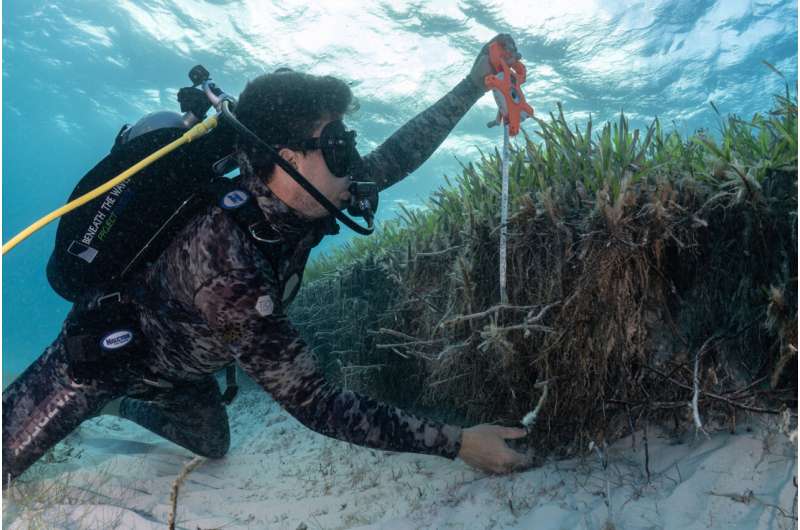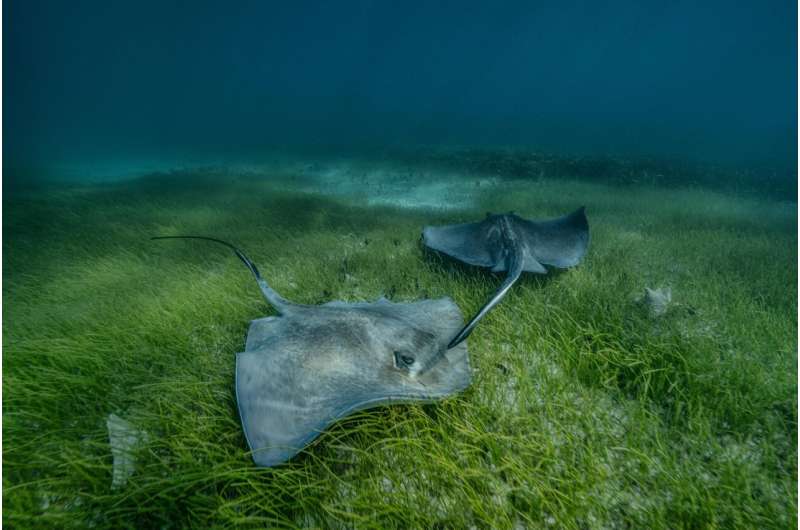November 2, 2022 report
Using tiger sharks to help estimate the size of a seagrass ecosystem in the Bahamas

An international team of researchers has used movements of tiger shark populations to make estimations regarding the size of a seagrass ecosystem. In their paper published in the journal Nature Communications, the researchers describe the methods they used to measure the amount of seafloor covered by seagrass in the Bahama Banks in the Bahamas.
As climate change proceeds, scientists around the world continue to study regions that might be impacted and possible ways to slow its progress. In this new effort, the researchers noted that up to 17% of carbon sequestered in marine sediments is held in seagrass, which suggests it could play a major role in climate change.
Unfortunately, no one really knows how much of the world's ocean floors are covered in seagrasses. In this new effort, the researchers hoped to increase that knowledge base by measuring the size of the seagrass ecosystem in Bahama Banks—a location that has major seagrass coverage.

To measure how much of the Bahama Banks seafloor is covered with seagrass, the researchers turned to tiger sharks, which are known to prefer living in areas that are covered with seagrass—it makes it easier to sneak up on prey.
The researchers captured 15 of the sharks and attached location trackers to them and then let them go. Tracking their movements over time allowed the researchers to create a virtual map of the seagrass fields in which they lived. The researchers also conducted 2,500 surveys by diving into the seagrass fields.
Using data from both efforts, the researchers created a reasonably accurate map of the seagrass field in Bahama Banks and estimated its size—approximately 66,000 to 92,000 km2. That finding, the researchers found, makes the field the largest known to date. They also note it expands the known seagrass coverage globally by approximately 41%. And this, they note, highlights the importance of research surrounding the amount of seagrass covering the oceans floor. Finding ways to protect or expand such fields could prove useful in slowing climate change.
More information: Austin J. Gallagher et al, Tiger sharks support the characterization of the world's largest seagrass ecosystem, Nature Communications (2022). DOI: 10.1038/s41467-022-33926-1
Journal information: Nature Communications
© 2022 Science X Network





















